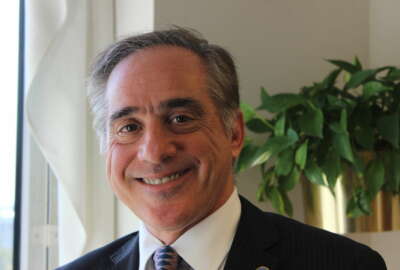The Veterans Affairs Department’s new plan to overhaul the Veterans Choice Program (VCP) is largely earning praise from Congress, but skeptics are worried about how the VA will roll out and implement the project.
“Every year, there are VA leaders that step before us and say it’s going to be different now, we’re going to change now, the culture’s going to change,” said Rep. Mike Coffman (R-Col.) during a House Veterans Affairs Committee meeting Nov. 18. “It’s newer, bigger, better. And the following year we find out, it’s not newer, better, bigger, and the same problems exist, if not deeper.”
House Veterans Affairs Committee Chairman Jeff Miller (R-Fla.) described the department’s plan as a “promising” but “fuzzy” vision of the future.
VA Deputy Secretary Sloan Gibson insisted, this time is different.
The VA designed the plan, which encompasses five major goals, based off feedback it received from veterans, VA employees, Veteran Service Organizations, other agencies and members of industry.
- Eligibility: The VA will streamline and consolidate the overlapping, and often confusing, eligibility requirements it uses to determine whether a veteran can receive care from an outside provider.
- Referral and authorization: The VA currently has up to seven different methods for referring veterans to a private care provider, Miller said. The VA said it will also streamline some of those processes as well, so that veterans can receive the authorizations they need more quickly.
- High-performing network: The VA will develop a new provider network, which will encompass a department-wide medical system and individual private provider systems.
- Care coordination: The department will improve its medical records management to help the department better coordinate with its private care providers.
- Provider payment: The VCP will focus on improving the billing, claims and reimbursement processes, in addition to training VA employees on new customer service and scheduling practices.
The department submitted its plan for the new Veterans Choice Program to Congress at the end of October, as required under a provision in the Surface Transportation and Veterans Health Care Choice Improvement Act of 2015.
The VA is asking for $421 million in fiscal 2016 to redesign and build IT systems for the department’s new provider network.
“It’s interesting that every time we talk about changing or improving a program, especially when you have two dual programs that are running side-by-side, the VA and non-VA care, you’re always adding additional money and not taking a savings on the VA side,” Miller said. “I know how CBO scores, but we need to be looking at savings.”
Nearly every committee member asked Gibson and his panel the same question: Just how long will project take?
No one had a definitive answer. Baligh Yehia, assistant deputy under secretary for health for community care at the Veterans Health Administration, described the new Veterans Choice Program as an “iterative process” that the VA would implement in three phases. Each phase would take roughly a year, he said.
During the first phase, the department will develop an implementation plan for the program with specific goals and milestones and decide whether it will use a contractor to build the community provider network. The VA will connect disparate provider systems in the second phase, and it will roll out larger systems during the third.
Though the provider network won’t support interoperable health care records between the VA and non-VA providers, it will let doctors and nurses view clinical information about a patient on one another’s medical systems through a cloud-based system, David Shulkin, VA undersecretary for health, told the committee.
The department recognizes it simply can’t meet the demand for quality care without help from the private sector.
“Health care is changing in America, and changing rapidly,” Shulkin said. “This is actually a plan that recognizes it and says VA has to not only keep up with it, but take advantage of everything that’s happening in American medicine. I used to run our accountable care organizations. It’s exactly those networks we want to tap into to get the best care for our veterans.”
Copyright
© 2024 Federal News Network. All rights reserved. This website is not intended for users located within the European Economic Area.

